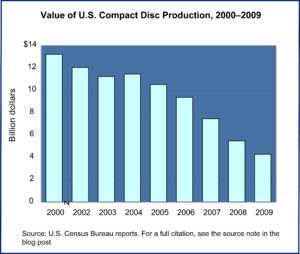
Polyaryletherketone, or PAEK, is a group of thermoplastics that is strong, flexible, and durable. These thermoplastics are resistant to corrosion and do not break down when sterilized. They can be machined and are versatile for many applications in the oil and gas, electrical and electronics, aerospace, automotive and medical industries. Seals, valves, and bearings for oil drilling; surgical implants; chemical pumps; and automotive gears are some of the applications for various forms of PAEK.
Three types of PAEK thermoplastics are polyetheretherketone (PEEK), polyetherketone (PEK), and polyetherketoneketone (PEKK). PEEK thermoplastics are used as a replacement for metal in high temperature and high wear applications. Depending on the use, glass or carbon fillers are added to PEEK to increase its strength and thermal stability. Unfilled PEEK has low smoke and toxic gas emissions when burned. As a result, it’s often used in airplane interiors. PEEK is also used to manufacture items such as bearings, piston parts, and electrical cable insulation. Increasingly, it’s being used for spinal fusion devices and reinforcing rods.
PEK thermoplastics are used for components that need to retain their strength when exposed to high temperatures over long periods. Gears, shafts, bushes, bearings, and miniature rotational precision parts in the aerospace and automotive industries are some of the end uses for PEK.
PEKK, like PEEK, lends itself to uses in 3D printing applications. However, PEKK has 80% more compression strength than PEEK and is naturally antibacterial. Because of its antibacterial properties, its osteoconductivity properties allowing for bone growth and its radiolucent properties compatible with MRI machines, this material is used in patient-specific 3D-printed implants. Oxford Performance Materials, Inc. received U.S. Food and Drug Administration approval for its PEKK cranial and fascial implants in 2013 and 2014, respectively. In 2019, this company obtained a license to sell its PEKK implants in various countries throughout Asia. PEKK, like other PAEK thermoplastics, is used in end-market industrial components also.
Today’s market size shows the expected total global revenue for PAEK thermoplastics in 2019 and 2024. In 2018, PEEK had the highest market share. Demand for PEEK is expected to increase during this time due to increased demand from the oil and gas, electrical and electronics and medical industries. Worldwide, the APAC region is projected to have the highest market share, 41%, followed by North America (30%), and Europe (10%). Some leading providers of PAEK products include Victrex PLC, Solvay, Evonik Industries AG, Arkema SA, Celanese Corporation, Gharda Chemicals Ltd., and Panjin Zhongrun High-Performance Polymers Co. Ltd.
Geographic reference: WorldYear: 2019 and 2024
Market size: $851 million and $1.15 billion, respectively
Sources: “The PAEK Market Size is Expected to Grow from USD 851 Million in 2019 to USD 1,149 Million by 2024, at a CAGR of 6.2%,” Olean Times Herald, October 23, 2019 available online here; “PAEK Market by Type (PEK, PEEK, PEKK), Fillers (Glass Filled, Carbon Filled, Unfilled), Application (Oil & Gas, Electricals & Electronics, Automotive, Medical, Aerospace), Region (APAC, Europe, North America, South America, MEA) – Global Forecast to 2024,” Marketresearch.com Report Description, October 2019 available online here; “Polyaryletherketone,” Wikipedia, November 25, 2017 available online here; Andy Pye, “Operating at PAEK Performance: An Overview of Polyaryletherketones,” Prospector, February 10, 2017 available online here; “PEEK (Polyetheretherketone),” Performance Plastics available online here; “PEEK vs. PEK vs. PTFE,” Greene Tweed available online here; Marco, “All You Need to Know About PEKK,” 3devo, June 28, 2017 available online here; Daphne Allen, “3D Printer of PEKK Implants Expanding in Asia,” MD+DI, July 20, 2018 available online here.
Image source: feiern1, “plastic-polymer-granules-1061731,” Pixabay, November 25, 2015 available online here. Picture is of plastic polymer granules, not PAEK thermoplastic granules.

